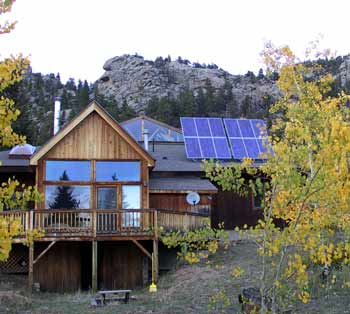The rebate level in this draft increases to $2.50 per watt installed, up
from $1.50 in the previous draft. For government and non-profit customers
up to 100 kilowatts, the rebate will be $3.25 per watt. Presumably, this
is balance out the fact that government and non-profit customers are not
eligible to also receive a financial incentive from any current or future
Federal tax laws, such as the current 30 percent tax credit.
Most notably, the current draft proposes a 5-year performance-based
incentive (PBI) of 39 cents per kWh for systems sized 100 kW and up (50
cents per kWh for government and non profit customers).
Solar energy industry representatives such as PV Now, CALSEIA, Vote Solar
and Americans for Solar Power (ASPv) are preparing to file joint comments
before the early-August deadline. The final decision to adopt the ruling
is expected on August 24th. Further decisions and adjustments are expected
to be made over the coming year.
A more complete summary of the 136-page draft decision follows
(courtesy of Americans for Solar Power (ASPv)).
Retrofit projects 100 kW and greater - declining performance based
incentives (PBI)
- Starting at 39 cents/kWh over 5 years for commercial projects that can
utilize federal tax incentives
- 50 cents/kWh for 5 years for non-profit and government projects (must
certify not third party financed)
- All building integrated PV (BIPv) PBI required
- Monthly payments (utility discretion to include payment in bill or
separate from bill)
- Any project can "opt in" to PBI
Retrofit projects less than 100 kW - declining up-front incentive based
on "expected performance"
- $2.50/watt for commercial projects that can utilize federal tax benefits
- $3.25 for non-profit and government projects (must certify not third
party financed)
- 30 to 100 kW market - 2 to 3 years to transition to PBI in 2010
- New construction projects incentives based on expected performance
- Optimal design factors for south, southwest and west orientations (peak
or maximum output)
- Treat all systems equally that are oriented between 180 to 270 degrees,
include location specific criteria, determine optimal latitude tilt that
relates to local latitude
Incentive Adjustment
- Decline based on achieved levels of solar demand- specified MW limit of
applications that are conditionally approved
- May vary based on utility service territory, some utilities may use
their budgets more quickly
Funding Levels
- Reserve CSI funds for residential customers 1/3 of CSI (33%) (currently
represent 1/3 of total system sales)
- Commercial and tax exempt customers 20%
- Non residential customers 47%
Meters
- Revenue grade meters for all systems required (less than 1% cost for up
to 30 kW and up to .5% for larger systems)
- Solar customer pays for all metering costs
- Independent Performance Monitoring, Access to Solar Performance
Information (customer & program)
Program Management/Program administrators
- Remain with current SGIP program managers for 2007
- Directed to issue solicitation to design expected performance protocol
and estimation tool by November 1, 2006.
- Must develop coordinated training plan for estimated performance site
inspectors w/plan by January 2007
- Must issue RFP for a state wide application processing and data
accumulation
Created new "CSI Program Forum"
- PUC Energy Division -First Quarter 2007 - Provides for stakeholder
participation and development of consensus based solutions
Soon to be released Draft Decisions
- Incentives for technologies other than PV
- Energy Efficiency requirements
Phase 2 Issues Identified in Draft ALJ Phase 1 Decision
- Statewide Marketing and Outreach efforts
- Program Administration for residential retrofit program
- Verification of system output
- REC ownership and how solar RECs fit into RPS process
- TOU tariffs
- Program Handbook- recommend Metering and Data Committee of Interested
Parties
(Provided schedule for workshop, Energy Division Draft, ALJ Ruling,
Comments & Reply comments, and ALJ Decision)
Periodic Review Process
- All aspects can be re-examined
- CSI Program review currently scheduled for 2009 or earlier
Issues currently envisioned:
- Government and non-profit customers- are higher incentives required?
- Incentive changes due to change in tax credits
- Review capacity factor use in PBI payment based on measurement and
evaluation findings
- Application of PBI for all systems over 30 kW
- Review budget reservation of one-third CSI budget for residential
customers
- Investigate feed-in tariff approach
- Consider adding trackers to the up-front estimated performance incentive
Phase 2 Schedule and Scope is Uncertain
The full draft ruling (136 pages, .pdf) can be viewed at the following
link.
